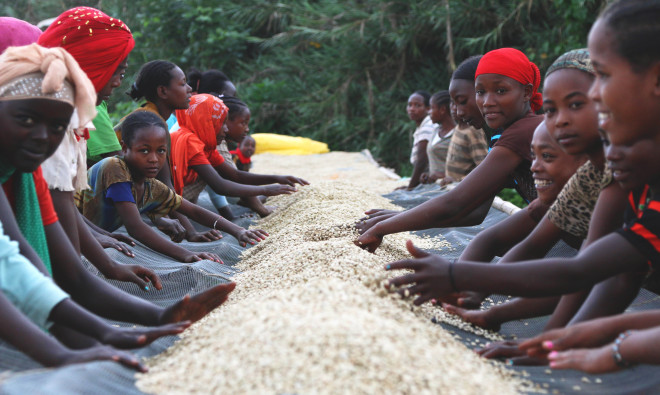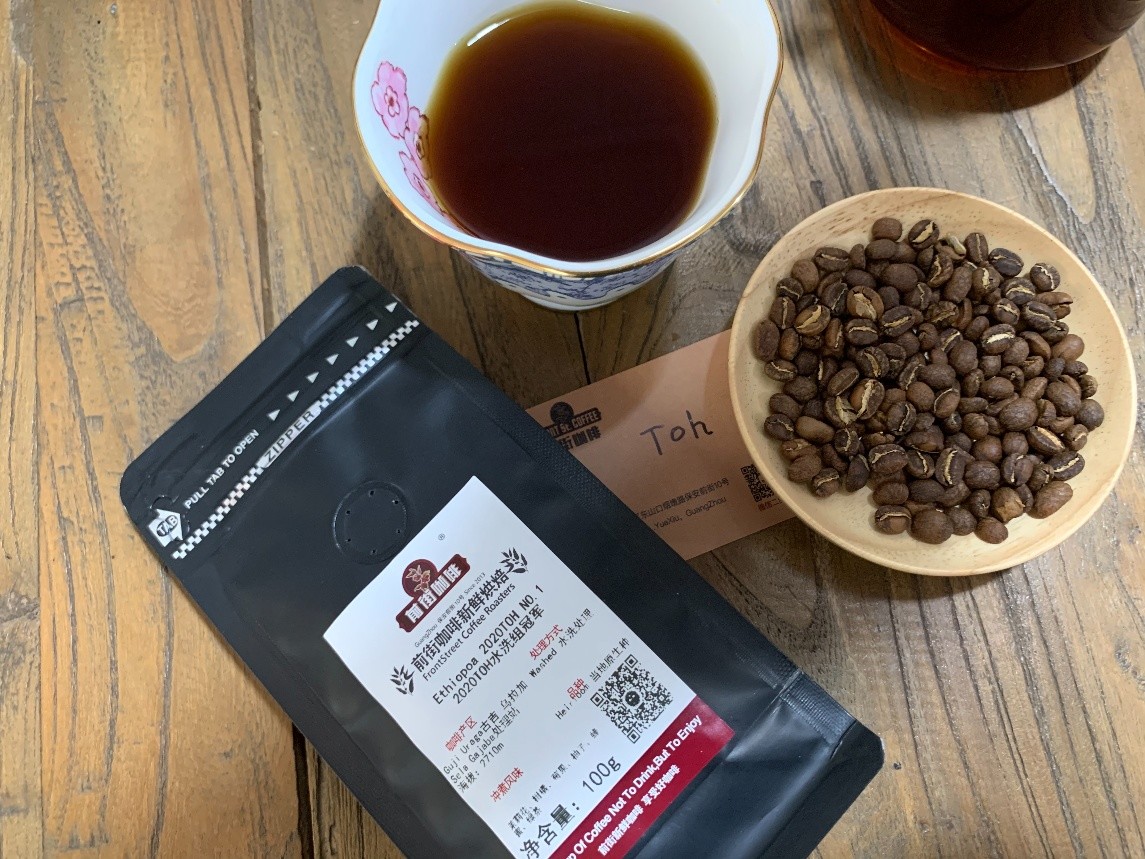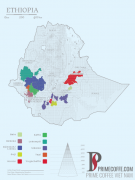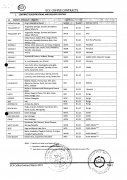Cultural ceremony of coffee in Ethiopia and Ethiopia how to drink COE22 and TOH coffee beans and their flavor and taste description
In addition to its rich biological origin, coffee also plays an important role in the culture of this country. The coffee ceremony (Coffee Ceremony) is part of the life of the Ethiopian people and dates back to centuries. Every morning, the women in the family bake fresh coffee and spices on the wacheff. Freshly roasted coffee beans are finely ground, roasted carefully and put into clay pots. Jebena boils on the stove. The boiling coffee is poured into everyone's cup in three rounds. Xu Baolin, a famous coffee scholar, made this ceremony a unique three-round coffee etiquette in Ethiopia in the bean hunter's guide to African coffee. Coffee must be called "Abo" in the first round, "Tona" in the second round, and "Baraka" in the third round. After the coffee is made, add two spoonfuls of sugar to the cup, which is usually paired with traditional snacks from different places. Guests are usually taken to the end of the third tour, otherwise it will be regarded as impolite. Drinking coffee is a ceremony for friendship and discussion of important matters between neighboring villages.

Ethiopia's geographical environment is very suitable for coffee growth. Coffee is mainly grown in the southern highlands between 1100 and 2300 meters above sea level. The main coffee producing areas are Harar, Limu, Djimma, Sidamo, Kaffa, Yergacheffe and Wellega. The soil in these areas is well drained, slightly acidic and red loose. Ethiopian coffee is harvested once a year. The beautiful white coffee flowers bloom from March to April, and then the fruit begins to grow. From September to December, the red coffee fruit is ripe for picking. The new season of coffee begins to be exported from November to December.
We used COE22 and TOH of street coffee as examples to briefly introduce the flavor and taste characteristics of Ethiopian coffee.

First of all, let's take a look at the No. 22 bid for Ethiopia's first COE in 2020. Qianjie believes that participating in the auction of coffee producing areas is another reward to support the development of Hu quality in coffee producing areas, thus encouraging more coffee farmers to actively participate in it. Official information shows that the bean is a tin card score of 87.64. Coffee is grown in Arsi, Ethiopia, 2050 meters above sea level. The treatment method is the sun, the labor cost of the sun is very high, and it needs to be turned evenly every 30-60 minutes to avoid excessive fermentation. Using medium and shallow baking, the flavor presents citrus, litchi, honey, cream, fermented wine, strawberry and mango.
What kind of flavor will the washed TOH bring to us?
First of all, we need to figure out what TOH is.

TOH raw bean competition is the most important raw bean competition in African coffee growers every year, known as "East Africa Harvest season Flavor Competition & # 39;" (East Africa Taste of Harvest competition; TOH). This event is similar to the Cup of Excellence; COE in Central and South America. since its establishment, the TOH raw bean competition has become an arena for discovering the best coffee in 12 African countries, including Kenya, Ethiopia, Uganda and Congo.
The TOH competition process is as follows: in the preliminary stage, the batches below 80 and below will be eliminated, and the high-quality raw beans from each region will be gradually selected to enter the national competition, and then the domestic and international judges will use the standards of the American Fine Coffee Association (SCAA) to test and score the cups. Those with high scores will be the annual national champions.
TOH raw bean competition is the most important raw bean competition in African coffee growers every year, known as "East Africa Harvest season Flavor Competition & # 39;" (East Africa Taste of Harvest competition; TOH). This event is similar to the Cup of Excellence; COE in Central and South America. since its establishment, the TOH raw bean competition has become an arena for discovering the best coffee in 12 African countries, including Kenya, Ethiopia, Uganda and Congo.
Washing treatment method
The TOH champion beans that Qianjie bought this time came from the washing group. The processing of coffee must go through strict and careful control and screening in all aspects. Manual picking of fully ripe fresh coffee fruits as raw materials is the first step in coffee quality assurance. Before the coffee is processed, it can be seen that beautiful and ripe red fruits look particularly attractive in the sun. After careful selection, the picked coffee fruit will enter the process of washing. Put the screened coffee fruit into a peeling machine and initially remove its skin and pulp; put the coffee beans with residual pectin into water and let them ferment for about 18-36 hours; after fermentation, wash the raw coffee beans with parchment in a flow tank to remove their pulp and pectin; dry the coffee beans after cleaning or dry them with the help of a dryer to reduce the moisture content to about 12%. Finally, remove the parchment of raw coffee beans.
Through the cup test in Qianjie, it is considered that the washing method highlights the acidity of coffee beans in Wulaga producing area, and the overall feeling is inclined to the characteristics of flower aroma and citrus acidity in Yega Xuefei producing area. The front street uses medium-light baking, and this coffee bean has the flavor of jasmine, lemon, berries, grapefruit, honey and green tea.
Important Notice :
前街咖啡 FrontStreet Coffee has moved to new addredd:
FrontStreet Coffee Address: 315,Donghua East Road,GuangZhou
Tel:020 38364473
- Prev

Story of planting grades in Ethiopian Coffee producing area characteristics of flavor and taste of Yega Sidamo coffee beans
As we all know, Ethiopia is the birthplace of coffee. Coffee is the main export commodity grown in Ethiopia. Coffee grown in Ethiopia is famous for its excellent quality and flavor. To this day, Ethiopia is one of the world's largest coffee producers and exporters and is in a leading position in the world.
- Next

The influence of Ethiopian Commodity Exchange on Coffee Market characteristics of flavor and taste of Huakui coffee beans
Coffee crops are the main source of foreign exchange in Ethiopia. It is the main export commodity to earn valuable foreign exchange for the country. However, coffee also has a vibrant domestic market.
Related
- Detailed explanation of Jadeite planting Land in Panamanian Jadeite Manor introduction to the grading system of Jadeite competitive bidding, Red bid, Green bid and Rose Summer
- Story of Coffee planting in Brenka region of Costa Rica Stonehenge Manor anaerobic heavy honey treatment of flavor mouth
- What's on the barrel of Blue Mountain Coffee beans?
- Can American coffee also pull flowers? How to use hot American style to pull out a good-looking pattern?
- Can you make a cold extract with coffee beans? What is the right proportion for cold-extracted coffee formula?
- Indonesian PWN Gold Mandrine Coffee Origin Features Flavor How to Chong? Mandolin coffee is American.
- A brief introduction to the flavor characteristics of Brazilian yellow bourbon coffee beans
- What is the effect of different water quality on the flavor of cold-extracted coffee? What kind of water is best for brewing coffee?
- Why do you think of Rose Summer whenever you mention Panamanian coffee?
- Introduction to the characteristics of authentic blue mountain coffee bean producing areas? What is the CIB Coffee Authority in Jamaica?

